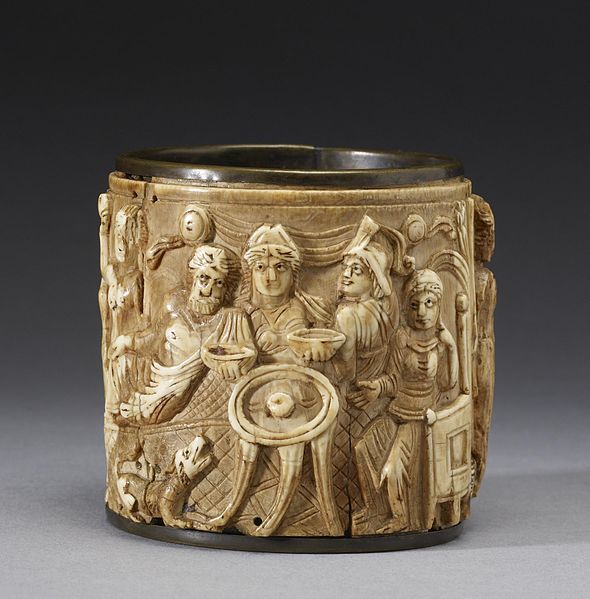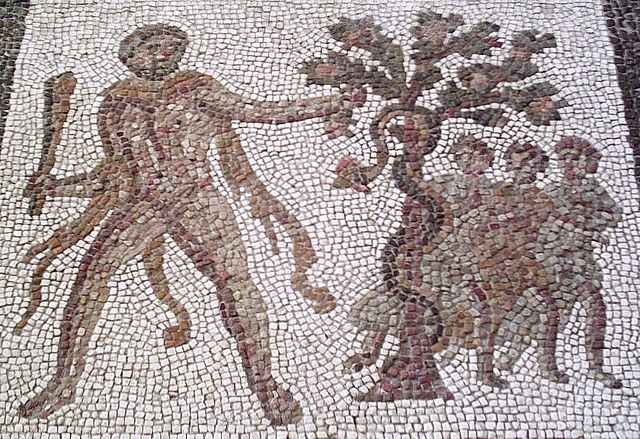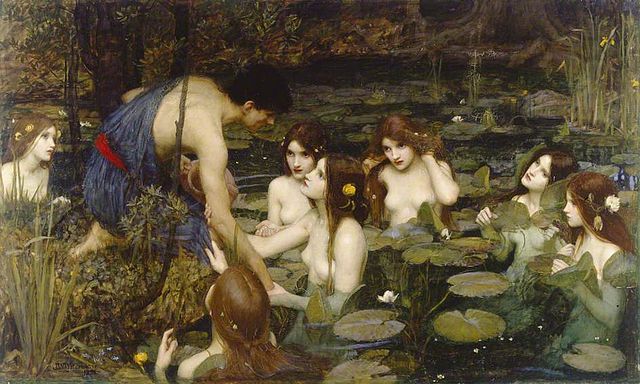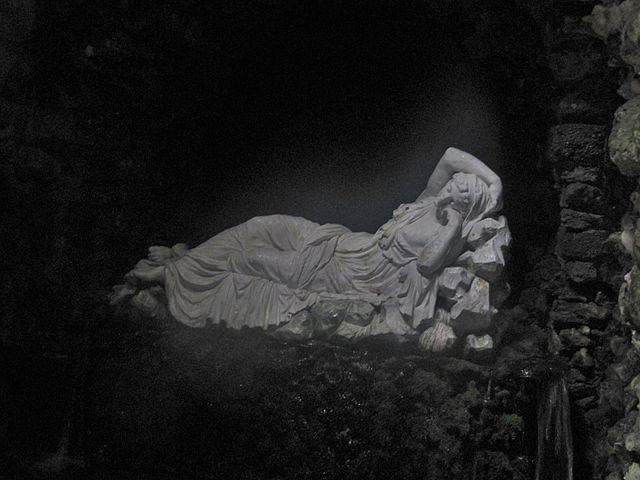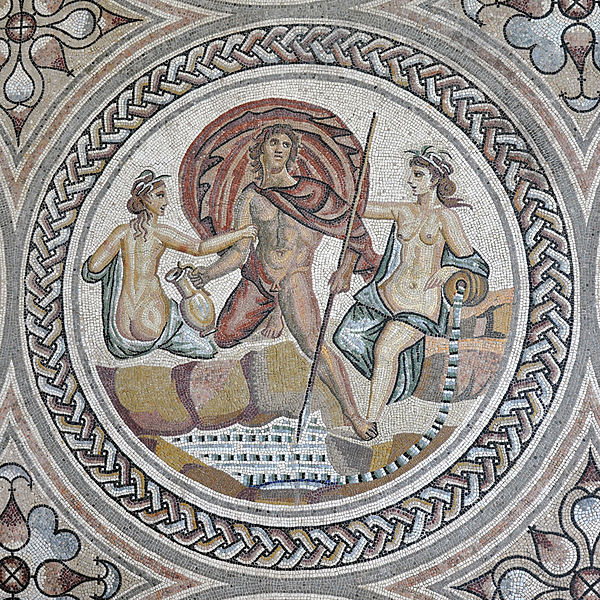In Greek mythology, the Hesperides are the nymphs of evening and golden light of sunsets, who were the "Daughters of the Evening" or "Nymphs of the West". They were also called the Atlantides from their reputed father, Atlas.
Garden Hesperides by Edward Burne-Jones
The Garden of the Hesperides by Frederick, Lord Leighton, 1892.
This circular Pyxis or box depicts two scenes. The one shown presents the Olympian gods feasting around a tripod table holding the golden Apple of the Hesperides. The Walters Art Museum.
Detail of a third century AD Roman mosaic of the Labours of Hercules from Llíria, Spain showing Heracles stealing the golden apples from the Garden of the Hesperides
A nymph is a minor female nature deity in ancient Greek folklore. Distinct from other Greek goddesses, nymphs are generally regarded as personifications of nature, are typically tied to a specific place or landform, and are usually depicted as maidens. They were immortal like other goddesses, except for the Hamadryads, whose lives were bound to a specific tree.
Nymph
In this 1896 painting of Hylas and the Nymphs by John William Waterhouse, Hylas is abducted by the Naiads, i.e. fresh water nymphs
The statue of a sleeping nymph in a grotto at Stourhead gardens, England.
Hylas and nymphs from a mosaic in Roman Gaul (3rd century)



